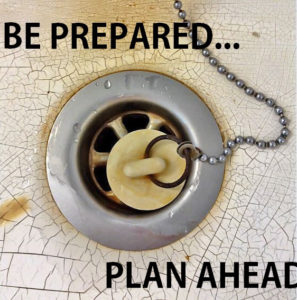How Learning Can Benefit Both You and Your Customer
Recently I was working on a small ceiling repair project. It was one of those simple projects that turned a bit more complicated. Due to city building codes and the lead based paint regulations this small $1600.00 project was going to end up doubling in price.
The project consisted of removing the balance of some water damaged plaster and lath, approximately 108 square feet. Lead based paint regulations require the removal and cleanup be done by a certified lead abatement contractor if the work exceeds 100 square feet. This isn’t about lead based paint regulations. That’s a topic for another day. The issue that I want to discuss is what this requirement caused. Due to the lead paint abatement, a building permit was needed. No problem. I pulled the permit, the demo was done by a certified lead paint abatement contractor. New sheetrock was installed, finished and painted. A new ceiling light fixture was hung. Everything was looking great and I called the inspector to come do the final inspection. This is where things get a little bumpy. The inspector asked about smoke alarms in the upstairs bedrooms. We check and find that there aren’t any. By code in this jurisdiction if a building permit is pulled for a remodel and there aren’t interconnected smoke alarms, they have to be installed. This meant we had to install a smoke alarm in each bedroom and a smoke and carbon monoxide alarm on each level. All of these alarms need to be hardwired together. Don’t get me wrong, this is a great idea. If they’re asleep in the upstairs bedroom and there is a fire in the basement, then all of the alarms will go off. The problem is…this is an old two story home with a basement. Have you ever tried to get electrical wire from one level to the next in an old house? If not, trust me it isn’t easy. All of this because we were a few square feet more than the minimum. Regulations can be a real problem and in this case expensive.
For a long time, I thought that licensing of contractors was just another way for the government to make more money, not to mention an additional cost that I had to pass on to my customer. More rules and regulations that allow some bureaucrat to stick their nose in someone else’s business. Like they really know what’s best for every customer. Regulating continues to expand and I don’t expect it to get any less any time soon. The problem is that not all contractors approach things the way that I do. There are a lot of “contractors” out there that don’t care about the customer or are just unaware and/or untrained. These are the guys that have made it necessary to have some level of protection for the customer. It would have been easy enough for me to have divided this project in to two separate projects and these rules wouldn’t have applied. This isn’t how I do things.
Okay now for the real point of this rant…I mean blog post.
I’m all for the protection of life and property. The question is, how is this best achieved? I think that education is as important as rules and regulations, maybe even more so. If both contractors and customers are better educated it could help decrease the need for regulations. Education allows for the understanding of the reasons. Just like the project above, understanding the benefits of the connected smoke alarms makes sense. It should be up to the customer if they think it is worth the cost.
One problem with regulations is that there are so many that it is difficult to keep up with them all, especially for those people not involved with it regularly. Not every situation can be regulated. I think when we over regulate in an effort to protect we make it so people no longer need to think for themselves, because someone else will.
Back to the interconnected smoke alarms of the project above. With some research by an electrician and working with the inspector we were able to find some 12-year battery powered alarms that are interconnected with a radio frequency rather than hardwired. This not only met the regulations, but also met the intent. It gave the customer the protection needed and kept the additional cost to the customer from getting out of hand.
By working together, the customer, electrician, inspector and myself came to a reasonable working solution. Not all builders would have put forth the effort to meet the required regulations while looking out for the customer.
Another class in the ‘school of hard knocks’ completed with a passing grade.



 designed, already fully packed day comes along and just messes up the whole thing.
designed, already fully packed day comes along and just messes up the whole thing.

 depressing. Even when it’s cloudy outside the natural light will brighten and energizes us. We aren’t intended to be cave dwellers. We need natural light both physically and emotionally.
depressing. Even when it’s cloudy outside the natural light will brighten and energizes us. We aren’t intended to be cave dwellers. We need natural light both physically and emotionally.





 down right impossible. Don’t get me wrong, the satisfaction that comes from doing a repair, changing a light switch or faucet, installing a window, building a deck or even remodeling a complete room can be extremely rewarding. The thing is, you better know what you are getting into before you start.
down right impossible. Don’t get me wrong, the satisfaction that comes from doing a repair, changing a light switch or faucet, installing a window, building a deck or even remodeling a complete room can be extremely rewarding. The thing is, you better know what you are getting into before you start.




